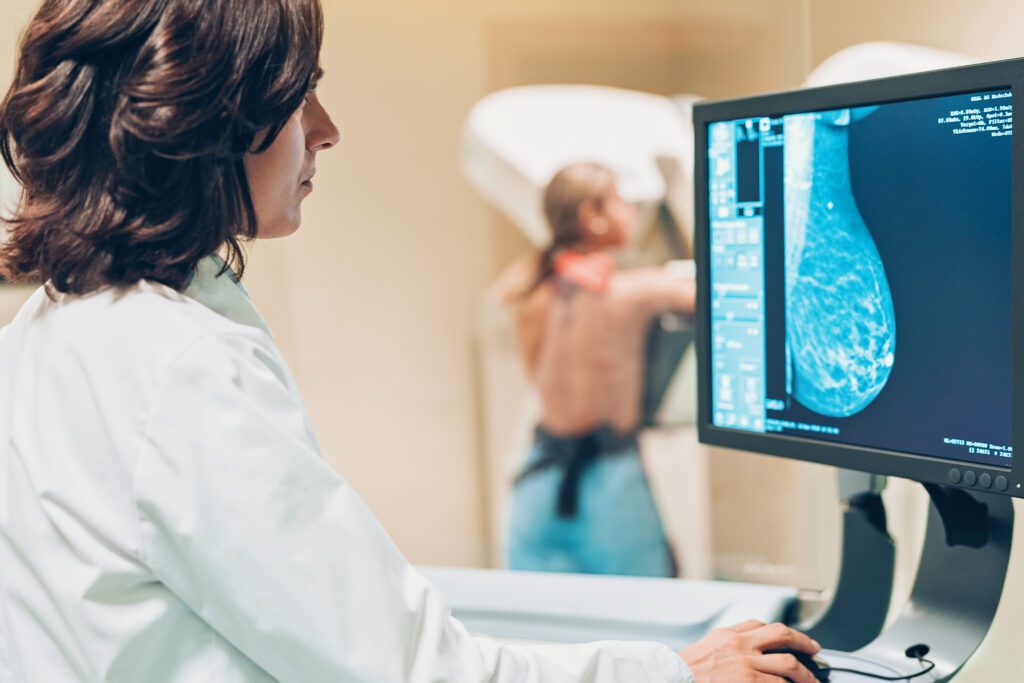by DR. JOY JACKSON
Breast cancer is the most common cancer affecting women except for skin cancer. In the United States, a woman is diagnosed with breast cancer every two minutes. Every 13 minutes, a woman dies from the disease. In Polk County, breast cancer death rates remain a significant concern, with 124.2 deaths per 100,000 women in 2021.
Research shows that early detection and timely treatment are two of the most effective ways to reduce breast cancer deaths. Detecting cancer early significantly increases the likelihood of successful treatment, as it is often caught before it has spread. Breast cancer found in its early stages is much more likely to be treatable. Regular checkups and screenings, especially mammograms, play a major role in the early detection of breast cancer. Since many women with breast cancer show no signs or symptoms of the disease, regular screenings are a vital part of preventive healthcare. According to the American Cancer Society, the five-year survival rate for localized breast cancer is 99%. This statistic shows that when breast cancer is caught before it spreads to other parts of the body, treatments like chemotherapy and surgery are more likely to succeed.
However, there are misconceptions about breast cancer that may prevent women from seeking timely care. The Department of Health in Polk County aims to address some of these myths to encourage early detection and ensure better health outcomes.
Myth #1: “Breast cancer presents with symptoms or just a lump, so I don’t have breast cancer if I don’t have a lump or any symptoms.”
Many women who are diagnosed with breast cancer never experience noticeable signs or symptoms. While a lump or mass is a common symptom, breast cancer can also present in other ways, such as skin swelling, dimpling, or nipple discharge. In many cases, breast cancer may not show any symptoms at all, especially in its early stages. Each person’s experience with breast cancer is unique, so the absence of symptoms or the absence of a lump does not necessarily mean there is no cancer.
Regular screenings and informing your medical provider of any abnormal changes in your breasts are crucial for detecting breast cancer early, even when no symptoms are present.
Myth #2: “I’m under 50 years old, so I can’t get breast cancer.”
Though increasing age is a risk factor for breast cancer, there is no such thing as “too young” to develop breast cancer. Statistics show that younger women can and do get breast cancer. Being familiar with how your breasts normally look and feel, regularly doing self-exams, and discussing your breast cancer risk factors with your medical provider can help detect issues early, regardless of age.
According to the American Cancer Society, here are the current mammogram recommendations:
Women ages 40 to 44: You have the option to start annual mammograms.
Women ages 45 to 54: You should get annual mammograms.
Women 55 and older: You can continue annual mammograms or switch to screenings every two years.
Myth #3: “Mammograms are dangerous.”
Some people avoid mammograms due to concerns about radiation. However, the amount of radiation used in a mammogram is very low and poses minimal risk. In fact, radiation from a screening mammogram does not cause cancer or make it spread. According to the National Cancer Institute, the benefits of early cancer detection through a mammogram far outweigh any potential risks. A mammogram remains the best way to detect breast cancer early.
Myth #4: “I don’t have any family history of breast cancer so there’s no need to worry.”
While a family history of breast cancer is a risk factor, anyone can develop breast cancer, even without a family history. In fact, most breast cancer cases occur in women with no family history of the disease. The best way to stay proactive is to get regular screenings based on your age and individual risk factors.
In conclusion, early detection and awareness are key to increasing chances of survival and ensuring timely treatment for breast cancer. By staying proactive rather than reactive, we can make a difference in the fight against breast cancer.
About the Author: Dr. Joy Jackson, an internal medicine physician, serves the community as director of the Florida Department of Health in Polk County (DOH-Polk). For more information about DOH-Polk, visit mypolkhealth.org. Follow DOH-Polk on Twitter at twitter.com/FLHealthPolk.
